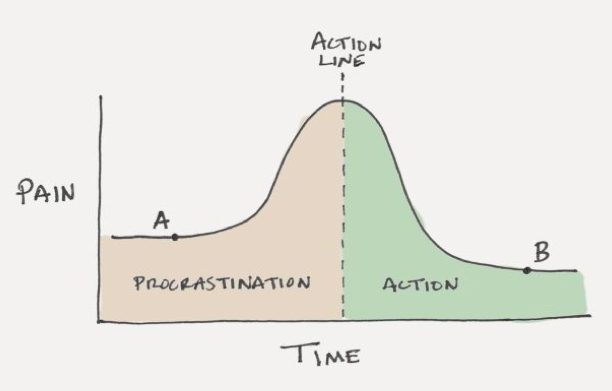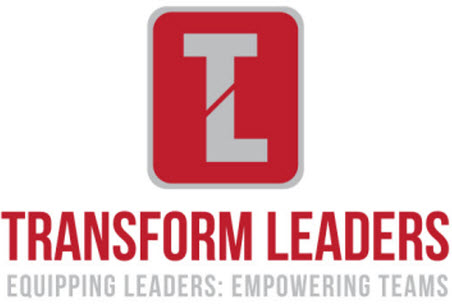
From Intentions to Actions – Why we keep over promising ourselves and under delivering.
I’m an optimist, most of us are. We keep goals, written or in our head, believing that we turn our intentions to actions. It would serve us all if we became more of a realist so that we put the practices and supports in place to enable us to move towards actions.
I’m thinking of those things that are consequential and non-consequential. Why? Our brain gets used to avoidance and procrastination, we don’t build the muscle to focus, we don’t understand what we truly need to move from intentions to actions and most importantly, we drift through life not reaching our potential.
Our Intentions are Good, but…..
There are three reasons why we consistently put things off:
-
Starting is painful
James Clear says, “As soon as you cross the Action Line, the pain begins to subside. In fact, being in the middle of procrastination is often more painful than being in the middle of doing the work. Point A on the chart above is often more painful than Point B. The guilt, shame, and anxiety that you feel while procrastinating are usually worse than the effort and energy you have to put in while you’re working. The problem is not doing the work, it’s starting the work.â€

-
There isn’t enough motivation
We make goals and plans with our future selves/organisations in mind.
The best way to understand this, says James Clear, is by imagining that you have two selves: your Present Self and your Future Self.
Goals are focused on your Future Self, not your present self. You are envisioning what you want your life, work, or team to be like in the future. It is easy for us to see why the change is needed and the value in the long-term of changes.
However, while the Future Self can set goals, only the Present Self can take action. When the time comes to make a decision and then take action, you are no longer making a choice for your Future Self. Now you are in the present moment, and your brain is thinking about the Present Self. It is no surprise that researchers have discovered that the Present Self really likes instant gratification, not long-term payoff.
So, the Present Self and the Future Self are often at odds with one another. The Future Self wants to be trim and fit, but the Present Self wants a donut. The future self wants a cohesive team, your present self wants to avoid conflict; your future self wants a new product, your present self wants to do something that is easier.
Your brain values long-term benefits when they are in the future (tomorrow), but it values immediate gratification when it comes to the present moment (today).
-
We fear failing
The truth is when we change; we are mostly doing something new. That takes energy. We also don’t know if it will work or not. This creates in us a fear response, and given that to feel safe is our number one goal, we procrastinate the new actions or projects.
Failure’ means different things to each of us but there are a couple of broad categories:
- Not living up to our own expectations – maybe you expect to be perfect at everything, maybe you expect to be able to learn anything you put your mind too. Ultimately the meaning we give these expectations is often about our sense of self, our ego.
- Not living up to others expectations – we grow up getting and seeking others approval by what we DO for much of our lives. Carol Dewck’s research shows that when children get praise for results more than effort they stop trying to do things that seem hard to them because they don’t want to fail and look stupid. As we grow to be adults many of us use this same strategy. The need of the approval of others can stop us from trying new things and potentially failing’.
What can we do about this?
-
Embrace the Messy Middle
This means being honest with ourselves about the challenges and the patterns that it brings up for us. When we are honest with ourselves we lean into the emotion and can confront and change its power – “I’m scared of failing but what is the worse that can really happenâ€, or “I’m addicted to the urgent, when what will make a difference is this important’ thing I’ve been promising myself, why do I sabotage myself like that?â€
-
Make the rewards immediate
If your future self is spending checks your current self isn’t prepared to pay for, we need to create a reward for the current self to pay the cost now.
If you have something that you find challenging on your intentions list, set a small, but immediate reward when you start the task. Notice I didn’t say, “When you have finished the task.†As I said earlier, starting is the hardest part. Incentivise your starts.
-
Create a Daily Routine
Again, James Clear recommends “The Ivy Lee Method†– Here is how he lays it out in five steps:
- At the end of each workday, write down the six most important things you need to accomplish tomorrow. Do not write down more than six tasks.
- Prioritize those six items in order of their true importance.
- When you arrive tomorrow, concentrate only on the first task. Work until the first task is finished before moving on to the second task.
- Approach the rest of your list in the same fashion. At the end of the day, move any unfinished items to a new list of six tasks for the following day.
- Repeat this process every working day.
Why does this work?
- It’s simple enough to actually work.
- It forces you to make tough decisions.
- It removes the friction of starting.
- It requires you to single-task.
-
Realise you need some kind of tracking/accountability system
This is the most important part. In our individualist societies we keep falling into the trap of thinking we can do it on our own, and anything less is weakness. The solo genius inventor is the ideal in our head.
It is simply a crock of…..
We need ways to get support, encouragement, someone to check-in on us and sometimes to nudge us from intentions to actions.
There are automated, on-line platforms that can help you move from intentions to actions and support you to achieve your goals.
A platform I use with my coaching and training clients to help them (and I use it myself) to move from intentions to action is the Habit Builder.
If you want to find out more about this platform email me at craig@transformleader.com.au
